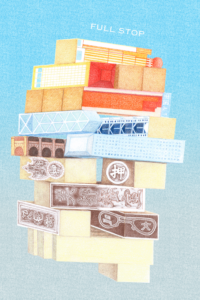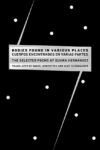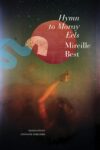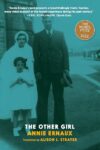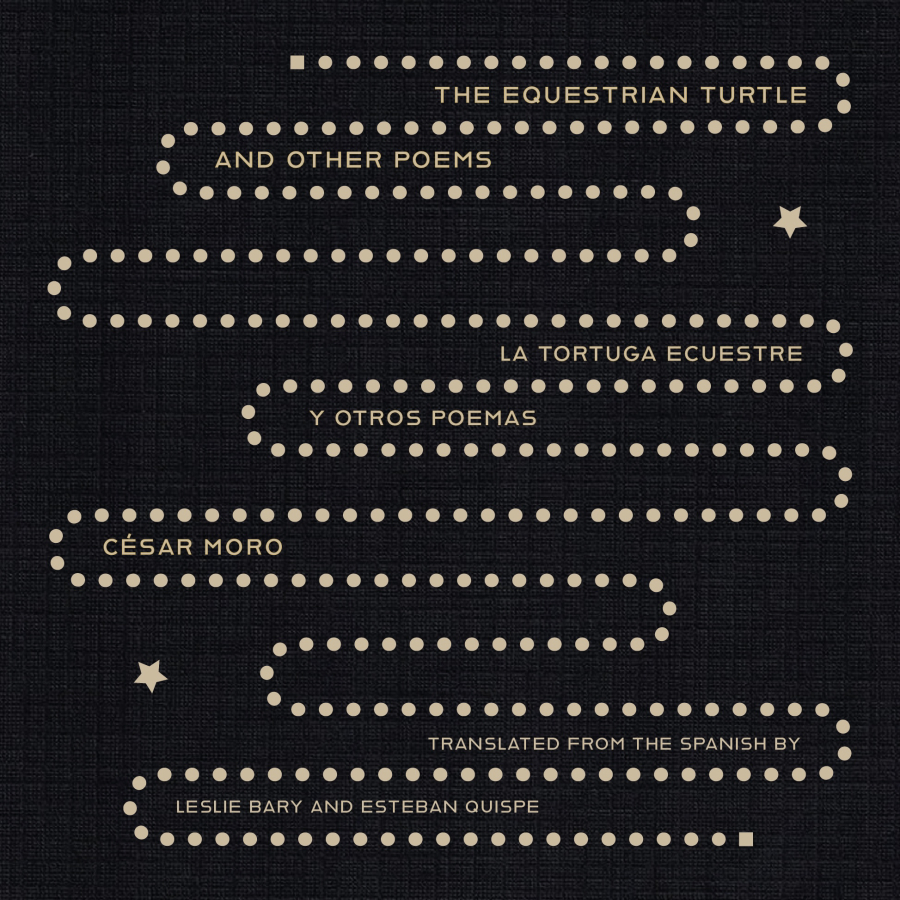
[Cardboard House Press; 2025]
Tr. from the Spanish by Leslie Bary & Esteban Quispe
The body that emerges from the sea, astride a turtle, transforms day into night and night into light. That same body becomes desire, becomes pain, becomes discrete parts reserved for nostalgia’s longing—for the very memory of pleasure. This is the radiant premise of César Moro’s lyric universe in The Equestrian Turtle and Other Poems, now energized in a new bilingual edition by the inclusion of eight previously unpublished poems and seven pieces of prose poetry. These additions bring us tragically closer to the voice of a timeless, irreverent, queer author—and shape a figure more tangible, more intimately connected to the longing for a beloved body, to the feverish mirage of love ignited by the forbidden.
But how do we define love without involving desire for the body? Likewise, how do we amplify a voice mutilated by a harsh, alien reality—deeply set amid political and social convulsions starkly opposed to our inner world? Moro, a Peruvian poet, queer, exile, and rebel by nature, makes it possible in The Equestrian Turtle, a text written in exile in Mexico between 1938–39. Here, Moro channels his unrestrained, stormy love for Antonio Acosta—desire as pain, anxiety as absence, time as forgetting, abandonment as home, solitude as happiness. Through a surrealist style, the poet plunges us into the complexities of a homoerotic love and into the depths of his symbolism. Fantastical landscapes, cosmic metaphors, sonic juxtapositions, and an exquisite abandon in his carnal encounters with his absent lover all emerge within this verbal collage, defying both time and social limits. Moro stands as a pioneer of queer poetry, as well as a key figure in Latin American surrealism.
Originally composed of thirteen poems, the centerpiece of The Equestrian Turtle shines with thematic richness. We find, throughout, the sensual yearning for another, the fever of convulsive love, the difficulty of forbidden eros—but also a world eclipsed by violence, fear, exile. And a cryptic poetic voice that finds in surrealism a means to express a timeless vision.
Moro wrote the book between 1938 and 1939 in Mexico City, amid explosive political and artistic shifts. Immersed in international surrealism, he challenged the Eurocentric guises of surrealism—which often drew from non-European sources without acknowledging their histories or cultural roots. Instead of exoticizing or mystifying his lover, Moro turns him into living flesh, an erotically desiring subject.
A striking snapshot of Moro’s style is found in “Odor and Gaze”:
“Your gaze of sea cucumber of whale of flint of rain,
of diaries of wet suicides…”
Here we sense his associative, tactile surrealism: concrete, visceral images fusing natural, animal, and textual elements—weird and compelling. Likewise, in “The Faint Footstep of the Nocturnal Demon,” he declaims:
“With your fingernails to opening the bowels of the earth
And to predict the loss of the world…”
Again—the erotic becomes violent, prophetic, a threshold between the body and apocalypse. And in “An Earthen Path in the Middle of the Earth”:
“…and your forehead rises like a snowy castle and turns off the dawn and turns on the day and returns to night…”
Moro melds opposites—water and flame, purity and decay, light and darkness—revealing the timelessness of his poetics. His imagery doesn’t merely serve as decor; it disrupts reductive canons, conveying desire in all its rawness while refusing to exoticize or sentimentalize.
César Moro’s poetry is inevitably rooted in dissent. Exiled, persecuted, expected to conform to heterosexual norms, his voice never retreats or self-censors. His queer intimacy is political not because it adheres to ideology, but because it shatters expectations—from patriarchy, from “respectable” literature. Writing candidly about same-sex love in 1939 wasn’t merely brave, it was transgressive.
Today, amid the resurgence of authoritarian, homophobic narratives, Moro’s voice strikes with renewed urgency. He fashions resistance not through manifestos, but through intimacy, eroticism, the dreamlike, the corporeal. The Equestrian Turtle reminds us that visibility of queer bodies and voices is itself protest—a vital form of cultural intervention. This new edition is not only a literary reclamation but also a cultural act proclaiming that queer Latin American poetry belongs on global stages.
In The Equestrian Turtle, desire isn’t metaphor—it’s flesh, it’s fury. Phrases like “The fine, secluded odor of your armpits…” or “To uproot our limbs to drink the blood slowly…” expose a violent, visceral, joyous intimacy. Moro eroticizes the body—not whimsically, but concretely, disturbingly. His writing is unapologetic: it is its own muse.
In this context, the translation by Leslie Bary and Esteban Quispe is remarkable. They don’t sanitize or moralize; they preserve rawness, sensuality, rhythm. Their English version resists exoticizing and remains faithful to the original’s pulse. This bilingual edition opens Moro to English-speaking audiences without diluting his intensity, granting broader access to a voice still burning with relevance.
To read Moro is to read a voice in motion, one that writes from a triple exile: political, geographic, and bodily. Born in Lima, expelled by a conservative society for his sexuality and aesthetics, Moro found temporary refuge in Mexico, where he wrote The Equestrian Turtle while longing for his Mexican lover Antonio Acosta. His words travel across countries and bodies. He writes in Spanish and French, sometimes mixing both. He invokes European surrealism while challenging its colonial blindness. He addresses his beloved across oceans and letters, not always certain the voice will reach him. In many ways, his poetry exists in a suspended state—a turtle moving slowly through the turbulence of time, desire, and language.
This sense of dislocation is not merely biographical—it structures his poetics. Language itself becomes a vessel of exile, a way to grasp a lover who is absent, a body that cannot be touched. His metaphors of night, sea, and travel are not only symbolic but physical manifestations of a queer voice trying to find itself, or at least to echo. Moro writes as if trying to pull his lover’s body out of water, syllable by syllable. Each poem is an act of reaching across distances: linguistic, emotional, erotic.
In this sense, Moro shares spiritual ground with other exiled or displaced queer writers. His desire, like that of Reinaldo Arenas decades later, is not peaceful—it is insurgent, devouring, illegible to systems of control. Like Jean Genet, Moro eroticizes abjection, using the grotesque and the sublime to tear open the limits of poetic expression. And like Hart Crane, he transforms the ocean into a metaphor for queer longing—vast, impossible, and achingly beautiful.
But Moro also diverges. Unlike Lorca, whose homoeroticism was often cloaked in abstraction, Moro names the beloved, traces armpits and limbs, rips open the flesh of desire. His is not a poetry of silence or subtext. It is confrontational, bodily, excessive. It bleeds, moans, dreams. It dares to imagine that love between men can be central to lyric tradition—not an aside, not a secret, but a pulse strong enough to carry an entire surrealist vision.
For American readers, these resonances matter. They allow us to place Moro in a living lineage of queer dissent. His work bridges worlds: Latin American and European avant-garde, political exile and sexual liberation, high lyricism and embodied mess. In the 21st century, as queer voices continue to face erasure and commodification, Moro offers something wilder, more radical: a language that does not negotiate, a body that desires even when banished.
The Equestrian Turtle and Other Poems is more than a recovered oddity—it’s a blast of defiant lyricism, a queer call to arms, a reminder of the generative power of embodiment. Moro invites us into a space where day can become night, where limbs are sacrificed to the altar of love, where the self becomes porous to desire. He does so from exile, from another language, from another century—but also from within us, in our most immediate human stakes. In literature’s ongoing fight for queer visibility and justice, César Moro re-emerges at a historical moment when his work’s urgency can finally be heard loud and clear.
This edition is essential—to grasp a voice that thrums with imagination and rebellion, to confront the wildness of love as both wound and healing, to watch a body come from the sea, mount a turtle, and re-write the night.
*
El cuerpo que emerge del mar, montado en una tortuga, transforma el día en noche y la noche en luz. Ese mismo cuerpo se convierte en deseo, en dolor, en partes separadas, reservadas para la nostalgia del goce. Esta es la premisa radiante del universo lírico de César Moro, ahora revitalizado en esta nueva edición bilingüe con la inclusión de ocho poemas inéditos y siete piezas de prosa poética. Estas adiciones nos acercan, con una precisión trágica, a la voz de un autor atemporal, irreverente, queer, y dan forma a una figura más tangible, más íntimamente conectada con el anhelo por el cuerpo amado, con el espejismo febril del amor inflamado por lo prohibido.
¿Pero cómo definir el amor sin involucrar el deseo por el cuerpo? ¿Y cómo amplificar una voz mutilada por una realidad áspera y ajena, en medio de convulsiones políticas y sociales que contrastan con nuestro mundo interior? Moro, poeta peruano, queer, exiliado y rebelde por naturaleza, lo hace posible en La tortuga ecuestre, escrita en el exilio en México entre 1938 y 1939. Allí canaliza su amor desbocado y tormentoso por Antonio Acosta: deseo como dolor, ansiedad como ausencia, tiempo como olvido, abandono como hogar, soledad como felicidad. A través de un estilo surrealista, Moro nos sumerge en las complejidades de un amor homoerótico y en la profundidad de su simbolismo. Paisajes fantásticos, metáforas cósmicas, imágenes yuxtapuestas y un exquisito desparpajo en los encuentros carnales con su amante ausente componen este collage verbal, desafiando al tiempo y a los límites sociales. Moro es un precursor de la poesía queer y figura clave del surrealismo en América Latina.
Compuesto originalmente por trece poemas, La tortuga ecuestre brilla por su riqueza temática. Encontramos a lo largo de sus páginas el anhelo sensual por el otro, la fiebre de un amor convulso, la dificultad de lo prohibido, pero también un mundo eclipsado por la violencia, el miedo, el exilio, y una voz poética críptica que halla en el surrealismo la forma de expresar una visión sin tiempo.
Moro escribió el libro entre 1938 y 1939 en Ciudad de México, en medio de explosivos cambios políticos y artísticos. Sumergido en el surrealismo internacional, desafió las versiones eurocéntricas del movimiento, que tomaban inspiración de lo no europeo sin reconocer sus historias ni contextos. En lugar de exotizar a su amante, Moro lo convierte en carne viva, en sujeto erótico y deseante.
Un ejemplo potente de su estilo está en “El olor y la mirada”:
“Tu mirada de holoturia, de ballena, de pedernal, de lluvia,
de diarios de suicidas húmedos…”
Allí sentimos su surrealismo táctil y asociativo: imágenes concretas, viscerales, que funden elementos naturales, animales y textuales. Del mismo modo, en “La leve pisada del demonio nocturno” escribe:
“Con tus uñas para abrir las entrañas del mundo /
y vaticinar la pérdida del mundo…”
Aquí, el erotismo se vuelve violento, profético, un umbral entre el cuerpo y el apocalipsis. Y en “Un camino de tierra en medio de la tierra”:
“…y tu frente se levanta como un castillo de nieve y apaga el alba y el día se enciende y vuelve la noche…”
Moro fusiona opuestos—agua y fuego, pureza y decadencia, luz y sombra—revelando la atemporalidad de su poética. Su imaginería no es decorativa: interrumpe los cánones reductivos, muestra el deseo en su crudeza, sin exotizar ni sentimentalizar.
La poesía de César Moro nace de la disidencia. Exiliado, perseguido, obligado a ajustarse a normas heterosexuales, su voz nunca se repliega ni se autocensura. Su intimidad queer es política, no por seguir una ideología, sino porque rompe las expectativas del patriarcado y de la literatura “respetable”. Escribir abiertamente sobre el amor entre hombres en 1939 no solo fue valiente: fue una transgresión.
Hoy, frente al resurgimiento de discursos autoritarios y homofóbicos, su voz adquiere una urgencia renovada. Moro construye resistencia desde lo íntimo, lo erótico, lo onírico, lo corporal. La tortuga ecuestre nos recuerda que la visibilidad de los cuerpos y voces queer sigue siendo una forma vital de protesta. Esta nueva edición no es solo un rescate literario, sino una afirmación cultural: la poesía queer latinoamericana tiene un lugar legítimo en los circuitos globales.
En La tortuga ecuestre, el deseo no es metáfora: es carne, es furia. Ejemplos como “El fino olor solitario de tus axilas…” o “Arrancarnos los miembros, beber la sangre lentamente…” revelan una intimidad violenta, visceral, gozosa. Moro no erotiza desde lo etéreo, sino desde lo concreto, lo incómodo. Su escritura no se disculpa: es su propia musa.
En este contexto, la traducción de Leslie Bary y Esteban Quispe es admirable. No moralizan ni suavizan; conservan la crudeza, la sensualidad, el ritmo. Su versión al inglés resiste el exotismo y es fiel al pulso del original. Esta edición bilingüe abre la puerta a lectores angloparlantes sin diluir la intensidad de Moro, acercándolos a una voz que todavía arde de relevancia.
Leer a Moro es leer una voz en movimiento, escrita desde un triple exilio: político, geográfico y corporal. Nacido en Lima, expulsado por una sociedad conservadora que rechazaba su sexualidad y su estética, Moro halló refugio temporal en México, donde escribió La tortuga ecuestre mientras anhelaba a su amante mexicano, Antonio Acosta. Sus palabras atraviesan países y cuerpos. Escribe en español y francés, a veces mezclando ambos. Invoca al surrealismo europeo, pero también lo cuestiona desde una mirada descolonial. Habla con su amado a través de océanos y cartas, sin saber si la voz llegará. Su poesía habita un estado suspendido—como una tortuga moviéndose lentamente por las aguas turbulentas del deseo, el tiempo y el lenguaje.
Este desplazamiento no es solo biográfico, sino estructural. El lenguaje se vuelve una nave del exilio, una forma de asir un cuerpo ausente. Sus metáforas de mar, noche y viaje no son solo simbólicas: son manifestaciones físicas de una voz queer que intenta encontrarse, o al menos hacer eco. Moro escribe como si tratara de sacar el cuerpo del amante del agua, sílaba por sílaba. Cada poema es un intento de alcanzar lo inalcanzable: emocional, lingüística, eróticamente.
Desde esta óptica, comparte territorio espiritual con otros escritores queer desplazados. Su deseo, como el de Reinaldo Arenas décadas después, no es pacífico: es insurgente, devorador, ilegible para los sistemas de control. Como Jean Genet, erotiza la abyección, entre lo grotesco y lo sublime. Como Hart Crane, convierte el océano en metáfora del deseo queer—vasto, imposible, y hermosamente doloroso.
Pero Moro también se distingue. A diferencia de Lorca, cuya homoerótica suele estar envuelta en abstracción, Moro nombra al amado, recorre axilas y miembros, desgarra la carne del deseo. No es una poesía del silencio o del subtexto. Es confrontacional, corporal, excesiva. Sangra, gime, sueña. Se atreve a imaginar que el amor entre hombres puede ser el núcleo de la tradición lírica—no un apéndice, no un secreto, sino un latido capaz de sostener toda una visión surrealista.
Para lectores estadounidenses, estas resonancias importan. Permiten ubicar a Moro en una genealogía viva de disidencia queer. Su obra es un puente: entre América Latina y la vanguardia europea, entre el exilio político y la liberación sexual, entre el lirismo elevado y el caos del cuerpo. En el siglo XXI, mientras las voces queer siguen enfrentando borramientos y mercantilización, Moro ofrece algo más salvaje, más radical: un lenguaje que no negocia, un cuerpo que desea incluso cuando es desterrado.
La tortuga ecuestre y otros poemas no es una rareza recuperada: es un estallido de lirismo desafiante, un manifiesto queer, un recordatorio del poder generativo del cuerpo. Moro nos invita a un espacio donde el día puede volverse noche, donde se sacrifican miembros en el altar del amor, donde el yo se vuelve poroso ante el deseo. Lo hace desde el exilio, desde otro idioma, desde otro siglo—pero también desde nuestra urgencia más inmediata. En la lucha continua por la visibilidad y justicia queer en la literatura, César Moro reaparece justo cuando más lo necesitamos.
Esta edición es indispensable: para conocer una voz que vibra con imaginación y rebeldía, para enfrentar la ferocidad del amor como herida y como cura, para ver a un cuerpo emerger del mar, montado en una tortuga, y reescribir la noche.
Nilton Maa writes from the borderlands—between Lima and New York, between poetry and narrative, between the queer body and the weight of history. Born in Peru to Chinese descent, his work pulses with desire, memory, and the echoes of migration. He is the author of ¿Qué bestia escoges hoy para morir? and the forthcoming Urban Beasts of New York, preceded by three earlier books of poetry and fiction. Editor at Nueva York Poetry Review and co-founder of Andean Dragon Press, he also curates poetry events across the Americas, including Fuerza Fest, the New York City Poetry Festival, and the Kerouac Festival of Poetry, Music, and Performance. His readings are multilingual, electric, and charged with presence.
This post may contain affiliate links.


